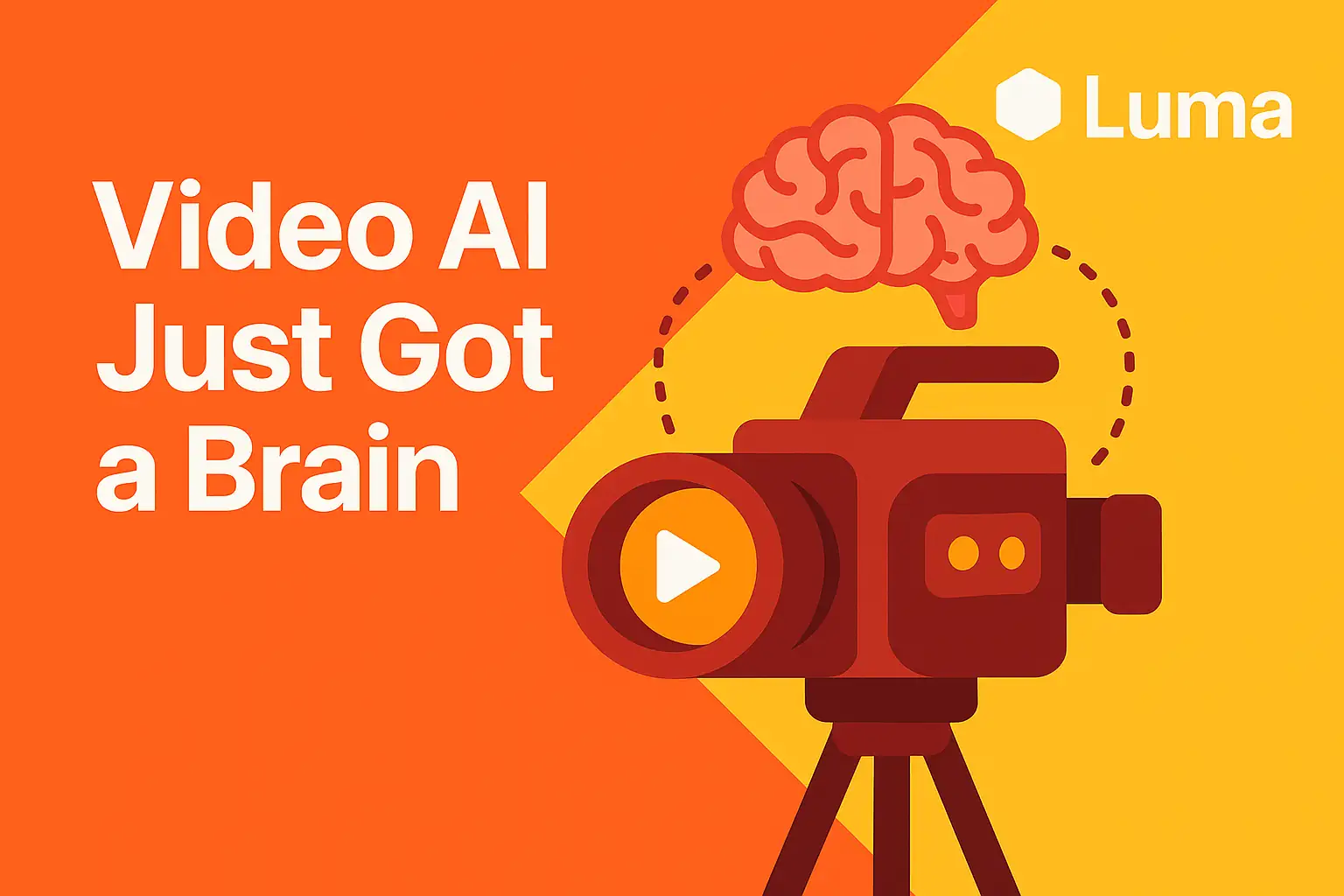
Ray 3 by Luma: The First Video AI That Can Reason
- What is Ray 3 by Luma?
- How Ray 3 brings reasoning to generative video
- The power of self-correction in AI output
- Why reasoning is the missing link in AI video
- Use cases: who benefits from Ray 3’s intelligence?
- What this means for the future of agentic video
What is Ray 3 by Luma?
Ray 3 is Luma AI’s latest video generation model — and it’s different from anything we’ve seen before. While previous models like Runway, Sora, and Pika have made huge leaps in visual fidelity and motion coherence, Ray 3 tackles a completely new challenge: understanding.
This model is designed not just to render visuals from text prompts but to understand the semantics, logic, and physical dynamics of a scene. It is capable of interpreting what's happening, planning how it should look, and checking its work for consistency — almost like a mini-director and editor rolled into one.
Luma positions Ray 3 as the first model to bring reasoning into the video generation loop, and its behavior shows that claim might be justified.
How Ray 3 brings reasoning to generative video
So, how exactly does Ray 3 “reason”? The process includes several intelligent layers:
- Input Understanding: It starts by analyzing the prompt and contextual cues. If it receives an image or storyboard as input, it doesn’t just treat it as texture data — it extracts meaning and relationships between objects.
- Scene Annotation: Ray 3 automatically annotates the elements in the frame. For example, it might recognize a character holding a flamethrower, note the direction they’re facing, and anticipate the natural motion of the flame.
- Intent Mapping: Beyond identification, the model reasons about what should logically happen next. This could mean a door swinging the correct way, rain falling with gravity, or characters reacting naturally to a stimulus.
- Pre-Rendering Self-Check: Ray 3 simulates the outcome internally before rendering the final frames. If anything is off — like a flame going the wrong direction — it adjusts it before final output.
This is fundamentally different from other video models, which often hallucinate or render physically impossible scenes due to a lack of structured reasoning. Ray 3 treats video not as a series of pixels but as a story unfolding logically over time.
The power of self-correction in AI output
One of the most compelling early demos from Luma showcased Ray 3 generating a scene with a flamethrower. In earlier models, flames would often shoot in random or incorrect directions. But Ray 3 identified the problem mid-process and adjusted the trajectory of the flame to match the expected physics of the scene.
This kind of self-correction — where the model understands that an output is “wrong” and fixes it — is a huge step forward. It significantly reduces the need for multiple generations or tedious prompt engineering. For creators, it means faster, more accurate outputs with fewer headaches.
Why reasoning is the missing link in AI video
Generative video has made remarkable progress, but one thing has consistently held it back: logic. A stunning clip with jittery motion, broken physics, or nonsensical actions quickly falls apart. Reasoning fills that gap by introducing a model that understands causality, coherence, and physical consistency.
Ray 3’s reasoning abilities bring AI closer to becoming a reliable creative partner. Rather than acting like a random generator, it behaves like a problem-solver — understanding the visual goal and mapping out the steps to achieve it realistically.
Use cases: who benefits from Ray 3’s intelligence?
The applications for Ray 3 are wide-ranging. Here’s where it could have immediate impact:
- Film Previsualization: Directors and animators can create realistic scene drafts without worrying about visual logic breaking down.
- Advertising & Commercials: Faster, cleaner generative output with less post-production revision.
- Social Media Content: Creators can produce smarter, more consistent video clips directly from concepts.
- Game Development: Use Ray 3 to prototype cinematics that actually follow physical and narrative rules.
- Education & Simulation: Generate scenarios that need logical flow — like safety training or instructional animations.
In short, any workflow that benefits from realism, narrative consistency, or physics-aware output stands to gain from Ray 3’s reasoning engine.
What this means for the future of agentic video
Ray 3 doesn’t just push the envelope — it defines a new category. We’re entering the era of agentic AI video, where models don’t just react but plan, adapt, and correct. This opens the door to future systems that may be able to collaborate in real time, respond to creative direction, or even co-write stories with human input.
Luma’s Ray 3 shows what happens when we stop thinking of AI as just a generator — and start seeing it as a co-creator. The next evolution of video won’t just be more detailed. It will be more intelligent.
And with Ray 3, that future is already here.